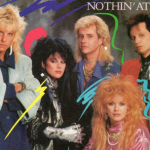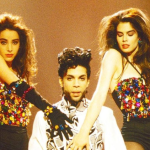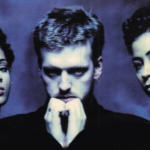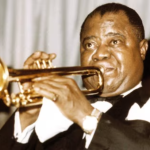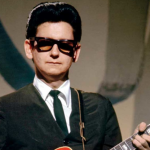“Sally Can’t Dance” – Lou Reed

“Sally Can’t Dance,” released in 1974, is the title track of Lou Reed’s fourth solo album. Known for his distinctive voice and provocative lyrics, Reed delivers a gritty and vivid depiction of urban life and character studies through this song. The track was one of Reed’s highest-charting solo singles, reaching number 10 on the Billboard 200 chart.
The song opens with a catchy, upbeat groove featuring a blend of rock and funk elements. The instrumentation, including prominent bass lines, rhythmic guitar riffs, and dynamic brass sections, creates a lively and energetic atmosphere. This musical backdrop contrasts sharply with the darker, more cynical lyrics, a hallmark of Reed’s style.

Reed’s vocal performance is characteristic of his signature style: cool, detached, and slightly deadpan. His delivery brings an ironic edge to the lyrics, enhancing the song’s satirical tone. Reed’s ability to convey complex emotions through his understated vocal style adds depth to the narrative.
Lyrically, “Sally Can’t Dance” tells the story of a woman named Sally, whose life is marked by a series of misfortunes and questionable choices. The lyrics paint a vivid picture of Sally’s experiences, from her troubled youth to her life in the city. Lines like “Sally can’t dance no more / She can’t get off of the floor” highlight her struggles and the toll they’ve taken on her.
![Review] Lou Reed: Sally Can't Dance (1974) - Progrography](https://progrography.com/wp-content/uploads/2017/10/sallycantdance-1-1280x720.jpg)
The song’s narrative structure is both engaging and thought-provoking. Each verse provides a glimpse into Sally’s life, creating a comprehensive portrait of her character. The chorus, with its repeated refrain of “Sally can’t dance,” underscores the central theme of disillusionment and lost potential.
Musically, “Sally Can’t Dance” is notable for its tight arrangement and production. The interplay between the instruments is seamless, with each element contributing to the song’s overall groove. The brass sections, in particular, add a vibrant and punchy quality to the track, enhancing its infectious energy.

Reed’s songwriting shines through in “Sally Can’t Dance,” showcasing his ability to blend sharp social commentary with compelling storytelling. The song captures the essence of urban decay and the complex lives of its inhabitants, themes that are recurrent in Reed’s work. His unflinching portrayal of Sally’s life invites listeners to reflect on broader social issues and the human condition.
Despite its upbeat sound, “Sally Can’t Dance” is infused with a sense of melancholy and irony. This juxtaposition creates a layered listening experience, where the surface-level catchiness is tempered by the song’s darker thematic elements. This complexity is a testament to Reed’s skill as a songwriter and his ability to craft songs that resonate on multiple levels.

In conclusion, “Sally Can’t Dance” by Lou Reed is a compelling and thought-provoking song that combines catchy, upbeat music with sharp, ironic lyrics. Reed’s distinctive vocal style and vivid storytelling create a memorable and impactful track. The song’s exploration of urban life and personal struggle makes it a timeless piece that continues to resonate with listeners. Whether appreciated for its musicality, its narrative depth, or its social commentary, “Sally Can’t Dance” remains a standout track in Lou Reed’s illustrious career.
Video:



